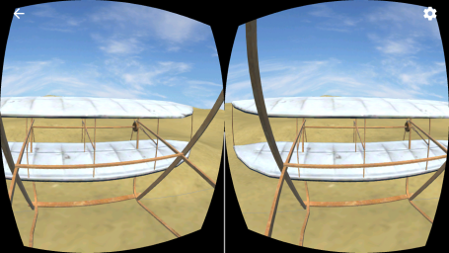National Air and Space Museum Opens VR Hangar App
WASHINGTON—When the Wright brothers’ launched their first successful flight they began the aviation era, which allowed people to travel to new places faster than ever. Today, people can learn about the brothers’ historic flight without having to travel anywhere at all with a new virtual reality app developed by the Smithsonian’s National Air and Space Museum.

The VR Hangar is a free, virtual reality mobile app that combines real 3D scans of some of its most iconic items and puts them into a virtual, immersive environment for users to explore. The app is designed to be used with Google Carboard or similar devices and is available on iOS and Android devices.
The app features vignettes on three of its most popular air and spacecraft exhibits: the 1903 Wright Flyer; the Bell X-1 Glamorous Glennis, which became the first plane to break the sound barrier; and the Apollo 11 command module Columbia. Each vignette is two to four minutes long—depending on how much of the content users want to explore—and features scenes on the development of these aircrafts, as well as their most historic moments.
The VR Hangar app can be used to further enrich an in-person experience at the National Air and Space Museum, according to Sarah Banks, the museum’s digital engagement coordinator, “but we hope people who have never been to the museum enjoy it as well (and may be inspired to visit).”
This is a first-of-its-kind experience for the Air and Space Museum, which hopes to gather insights from its users.
“The VR Hangar was designed to explore what kinds of experiences our guests might enjoy beyond the walls of the museum,” Banks explained. “Are users drawn to object-based or more narrative experiences? Do they enjoy learning facts about the aircrafts in a VR environment, or is the real potential for this format to illustrate the dramatic moments that made history? We built the VR Hangar to find out.”
While the museum views the VR Hangar as a learning experience, Banks says that the app will remain available as long guests are enjoying it. If people respond positively to the experience, “we can begin to explore more mobile projects to bring our collection to users beyond our walls, and consider more immersive experiences for our future exhibits,” said Banks.
The professional video industry's #1 source for news, trends and product and tech information. Sign up below.
